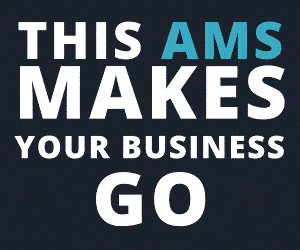An AgencyEquity Exclusive
Hailed by many insurance agencies as an investment that pays for itself (and so much more), “electronic signatures” or “e-signatures” is revolutionizing how companies work – as a key to paperless, more efficient and more profitable operations. Much of the evolution has to do with the similarly fast-evolving customers, whose modern, on-the-go lifestyle is driving traditional service providers such as insurance agencies to keep up.
About three out of four insurance sales begin with a phone call, according to InsureSign (www.insuresign.com), an e-signature solutions provider specializing in the insurance industry. This means if agents are committed to sealing the deal, they have to find ways to easily reach their clients wherever they are. The company highlights that insurance agencies using e-signatures can easily sell policies outside their local areas – a feat that was previously too costly and inconvenient for both insurers and customers.
Apart from InsureSign, there are other providers such as DocuSign (www.docusign.com) and Silanis (www.silanis.com), which support a wide variety of platforms including desktop computers, iPhone, iPad and Android devices – and guarantee that the documents are more secure than their paper equivalent. Interested insurance agencies may also check out other providers online by using keyword “e-signatures."
If these are not enough reasons why insurance agencies that are lagging behind the e-signature trend should make the switch, then the following points may just be the final nudge they need to move toward the right direction.
Seal Deals Faster than the Fastest Fax
Probably the top reason why most insurance agencies and policyholders have come to love and prefer e-signatures over wet signatures is speed.
No other technology has made signing documents and sending them back easier and faster than e-signatures. The closest and one of the longest-used technologies before e-signatures have become commonplace is fax. Faxing may have been a vast improvement over physically sending documents via postal service, but is no contender for e-signatures when it comes to speed or convenience – as the latter takes only hours to as fast as minutes to seal a deal as opposed to days with faxes, especially when the client does not have an immediate access to a fax machine. With the ability to sign on a mobile device, one also does not have to be near a computer anymore, but perhaps on a business trip where it would have taken a week or more to secure a signature.
Apart from saving time and effort on the part of policyholders who previously had to undergo other processes such as printing and scanning documents, e-signatures also streamline a company’s internal workflow. The advantages extend to all departments that require signatures on a regular basis – from the executive board and human resources to the legal department, finance and accounting.
Such organized and streamlined operations also minimize errors – further expediting processes and freeing up resources that can be allocated to other productive activities such as business development and skill-building.
Take Advantage of the e-Signature DNA
Depending on the software and the e-signature provider, relevant details such as the location, time, date and IP address may stay with the history of the e-signature. Unlike a wet signature, e-signatures may also be tracked as to which email address they were sent to.
These features become especially useful in the event that a document with an e-signature is questioned or brought to court for whatever reason. This is because the details or “DNA” embedded in the e-signature will be enough to identify not only the signatory but also the place and exact time the signature was made – plus the receiver of the signed document.
Improve Security and Minimize Errors
Security is one of the biggest concerns of insurance companies and other industries about the use of e-signatures. Thanks to the Electronic Signatures in Global and National Commerce (ESIGN) Act, agencies can rest assured that clear compliance regulations ensure that documents using digital signatures are safe from tampering and unauthorized use as digital encryption is in place.
It is this security feature that serves as a pillar in a workflow that has proven to be several times more efficient than paper-dependent processes.
Raise Bottom Lines
With e-signatures, every dollar that is otherwise spent on paper, printing, scanning, faxing and shipping is converted into savings. For many insurance companies, this means accumulating a huge amount of savings annually. Some have even reported having saved as much as $5 million per year since they began using e-signatures.
Other costly paper-dependent processes that e-signatures have changed forever are:
- Long-winded sale procedures
- Courier fees
- Custodial storage costs for original documents
- Omissions and other mistakes that require repeating some processes
Again, money and other resources saved in the process of using e-signatures can be used in other projects or, as some competitive companies have done, passed on the savings to customers – as an attractive added value.











